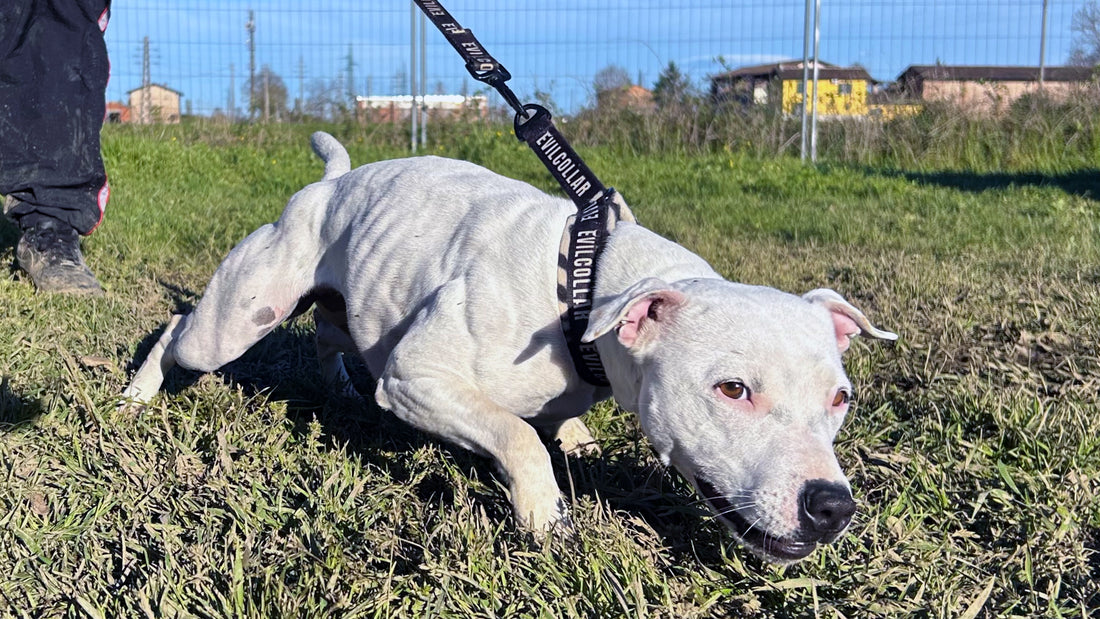
The Importance of Musculature in Sporting Dogs: Functions and Effective Training
Share
The musculature of sporting dogs plays a crucial role in their performance. Understanding the muscular structure and the specific demands of canine sports is essential for keeping these four-legged athletes in optimal condition. In this article, we will explore in detail the musculature of dogs, its functions, and how to train it effectively.
Table of Contents
- Types of Muscles in Dogs
- Structure of Skeletal Muscles
- Functions of Musculature in Sporting Dogs
- Muscle Training in Sporting Dogs
- Nutrition for Muscle Support
- Conclusion
Types of Muscles in Dogs
Dogs, like humans, have three main types of muscles:
Skeletal Muscles
These muscles are responsible for voluntary movement and are connected to bones via tendons. They are crucial for any physical activity, from simple daily movements to advanced sports performance.
Cardiac Muscles
Found in the heart, these muscles are responsible for pumping blood throughout the body. Although not directly involved in muscle training, their efficiency is fundamental to supporting physical activity.
Smooth Muscles
These muscles are located in internal organs and blood vessels and regulate involuntary functions such as digestion and circulation.
Structure of Skeletal Muscles
Skeletal muscles are composed of muscle fibers, divided into two main categories:
Slow-Twitch Fibers (Type I)
These fibers are fatigue-resistant and are used for long-duration activities, such as endurance running. They are rich in mitochondria, which produce energy through aerobic respiration.
Fast-Twitch Fibers (Type II)
These fibers are ideal for quick, powerful movements, like sprinting. They are further divided into type IIa, which combine endurance and strength characteristics, and type IIb, specialized in explosive strength.
Functions of Musculature in Sporting Dogs
Movement and Stability
Skeletal muscles enable joint movement and maintain joint stability during sports activities. For instance, the muscles of the hindquarters are essential for propulsion during running and jumping.
Athletic Performance
In sporting dogs, muscle strength and endurance are essential to excel in Cynogames disciplines. Each discipline requires a specific balance of strength, speed, and endurance, which must be developed through targeted training.
Injury Prevention
Well-developed and balanced musculature helps prevent injuries by adequately supporting the joints and improving movement biomechanics. A training program that includes strengthening and stretching exercises can reduce the risk of injuries.
Muscle Training in Sporting Dogs
Training Principles
- Progressivity: Training intensity and volume should increase gradually to avoid overload and injuries.
- Recovery: Adequate recovery periods are essential to allow muscles to repair and grow.
Exercises for Muscle Development
- Strength Exercises: Include activities such as pulling light loads, which increase muscle strength and endurance.
- Agility Exercises: Obstacle courses and slalom help improve coordination and speed.
- Endurance Exercises: Long and regular runs increase aerobic capacity and muscle endurance.
- Stretching and Flexibility: Stretching exercises help keep muscles elastic and reduce the risk of injuries.
Nutrition for Muscle Support
Essential Nutrients
A balanced diet rich in proteins, healthy fats, and complex carbohydrates is essential to support muscle growth and repair. Amino acids, particularly leucine, play a crucial role in muscle protein synthesis.
Supplements
In some cases, supplementation with vitamins, minerals, and antioxidants can be useful for supporting muscle recovery and improving performance. It is always advisable to consult a veterinarian before introducing new supplements into a dog's diet.
Conclusion
The musculature of sporting dogs is fundamental to their athletic performance and overall well-being. A holistic approach combining targeted training, a balanced diet, and adequate recovery can help keep these four-legged athletes in optimal condition.
Always remember to consult a professional to tailor the training and nutrition program to the specific needs of your sporting dog.
